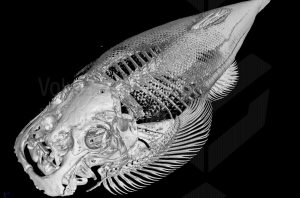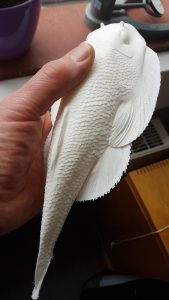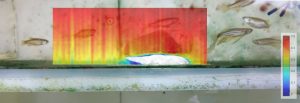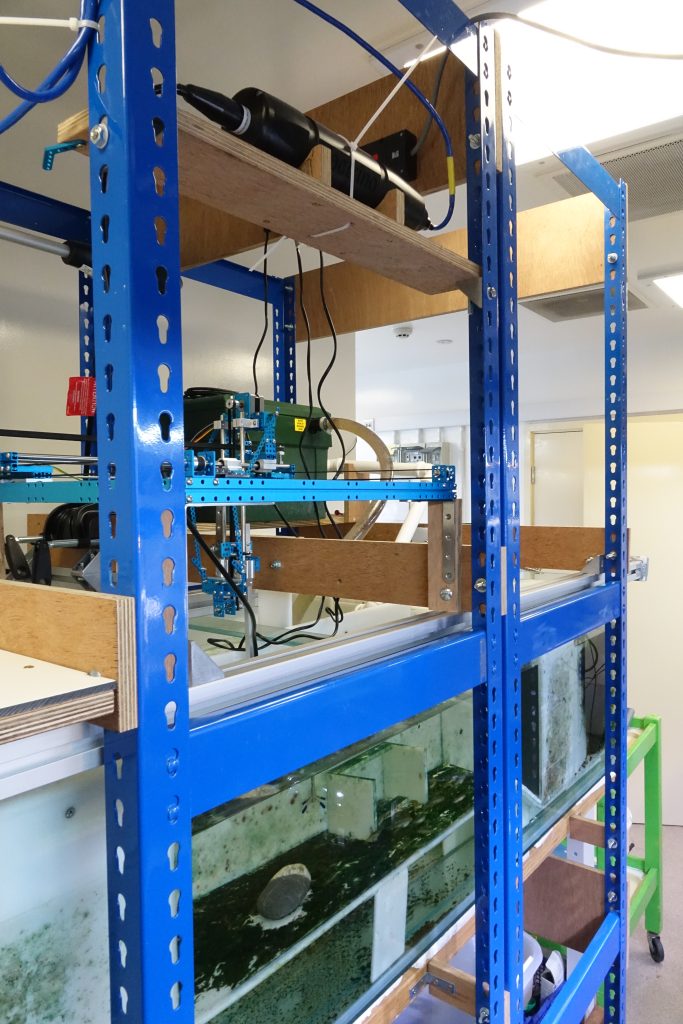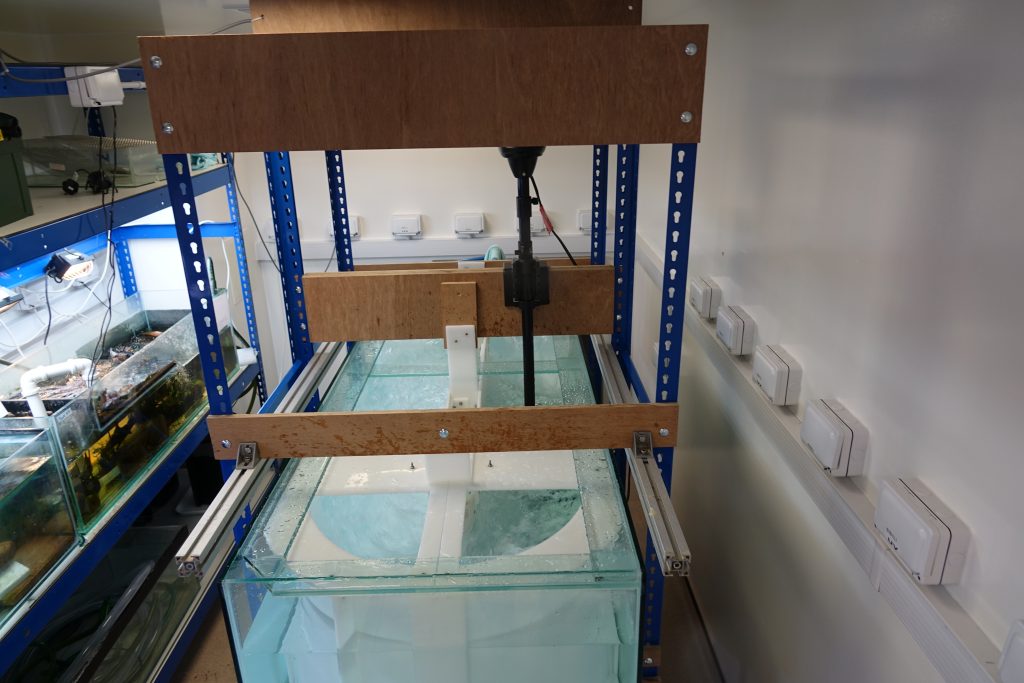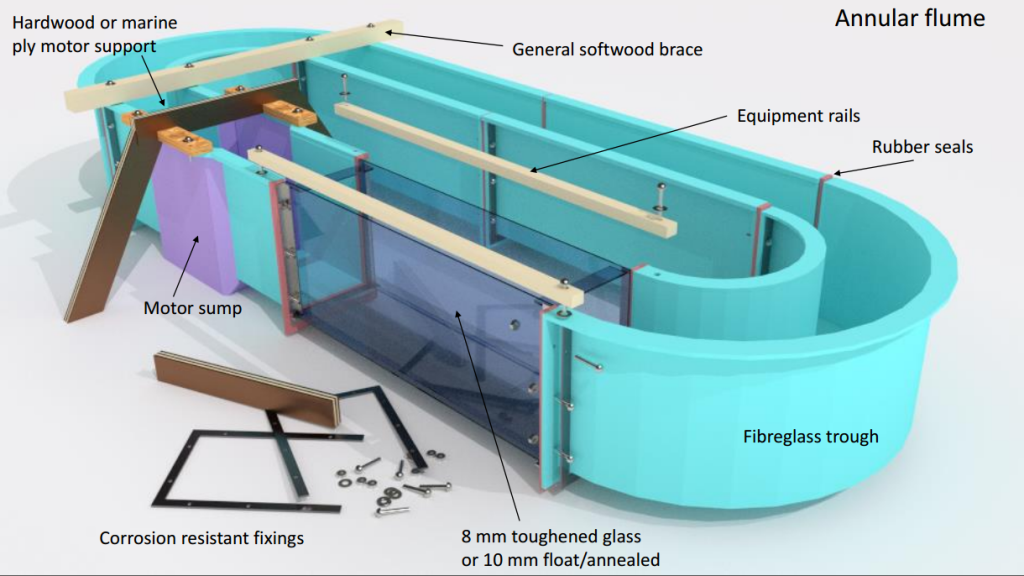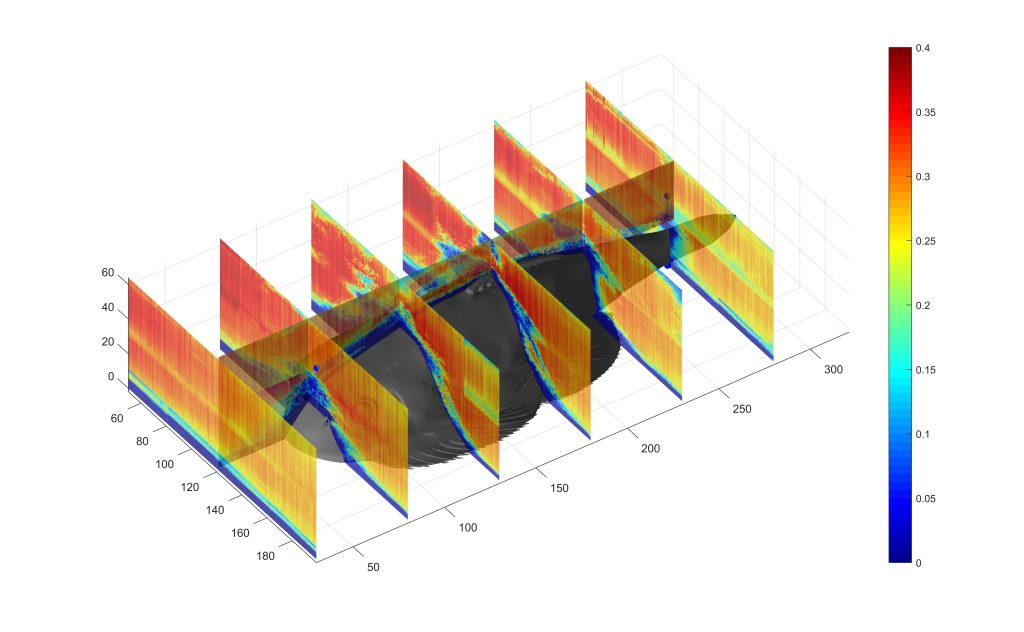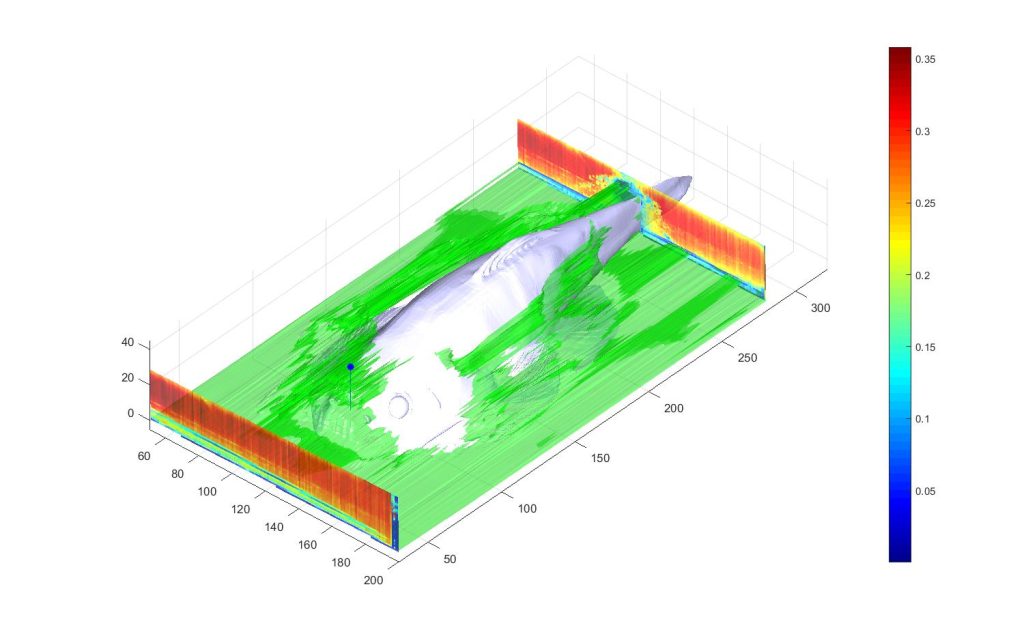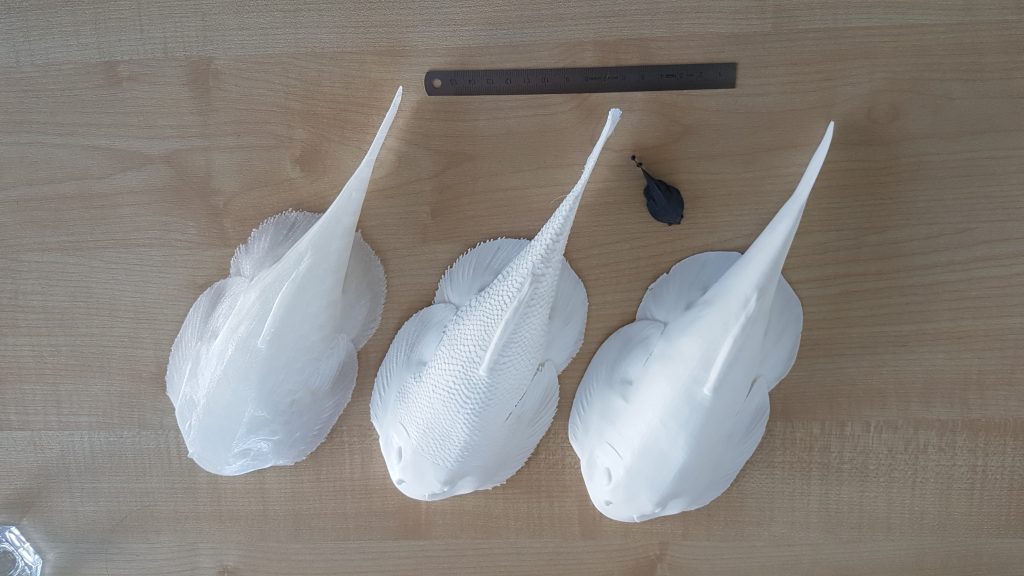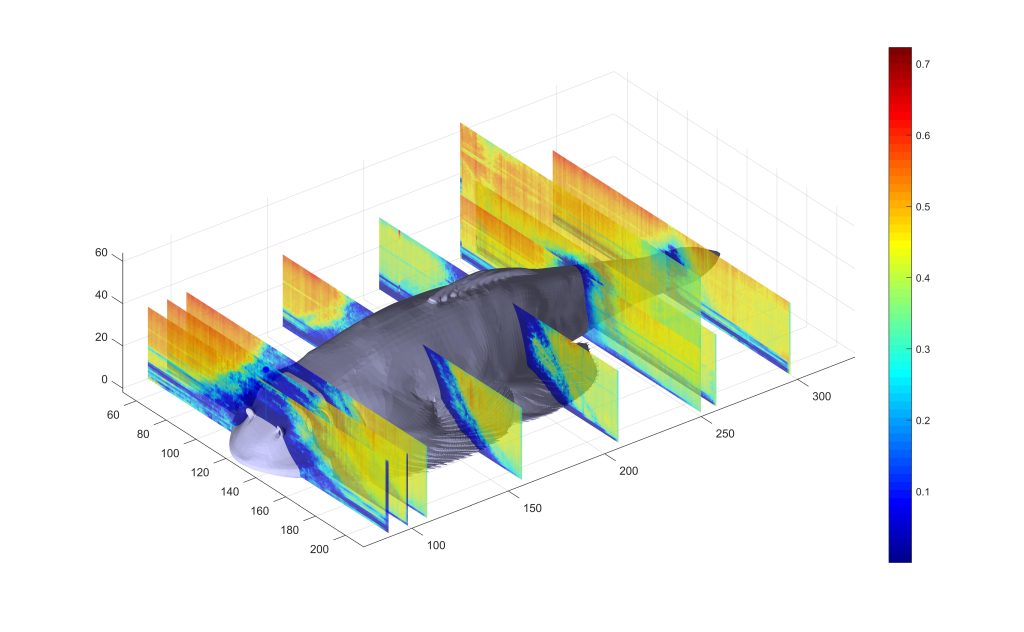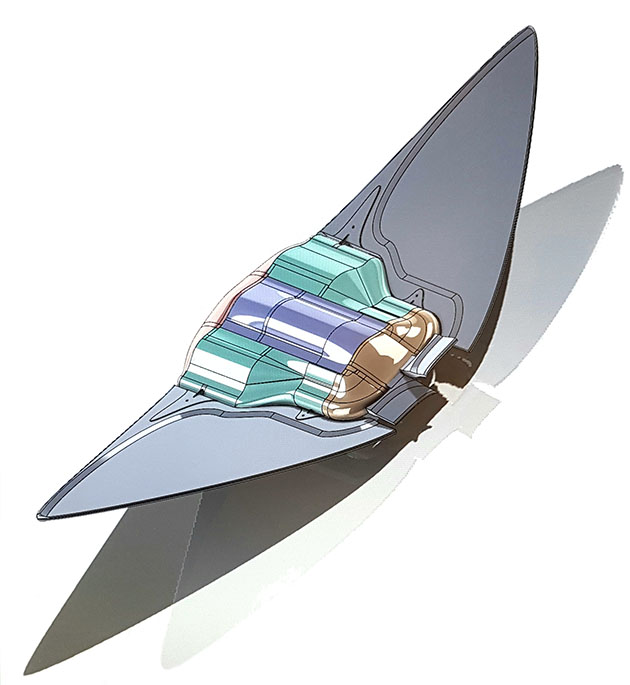Here we made a flume in which we could make water flow, 3D printed an enlarged scale model of a small fish (a hill stream loach), and made an XYZ plotter type thing to move an ADCP around to measure flow. An ADCP is an Acoustic Doppler Current Profiler – The Vectrino: it measures the speed of the water in 3D in a series of 1mm cubic zones under the instrument. Nortec make the Vectrino ADCP and we controlled it through programs in MATLAB so it could be moved along a transect, and the readings downloaded and stored. Then the whole flow can be visualised along the transect, in the resulting figures we chose x-velocity, or variance in velocity, or total water speed, and this helps us understand how the fish is evolved to handle extreme water flows.

Here is the carrier frame for the Vectrino Profiler. This was installed above the fast turbulent flume to move the instrument accurately and precisely along a transect in 1 mm steps.
Here follows a few more images of the laboratory set-up. The idea was to make a scale model of the fish and then change critical aspects, such as scale smoothness or head angle of attack and measure the hydrodynamic impact. The actual fish are 25 cm long, so the 250 cm long scaled up versions were easier to measure. We also used some models at actual scale. We made the bodies of the models from CT Scans of real fish and made the skeletal structure as accurate as we could.
